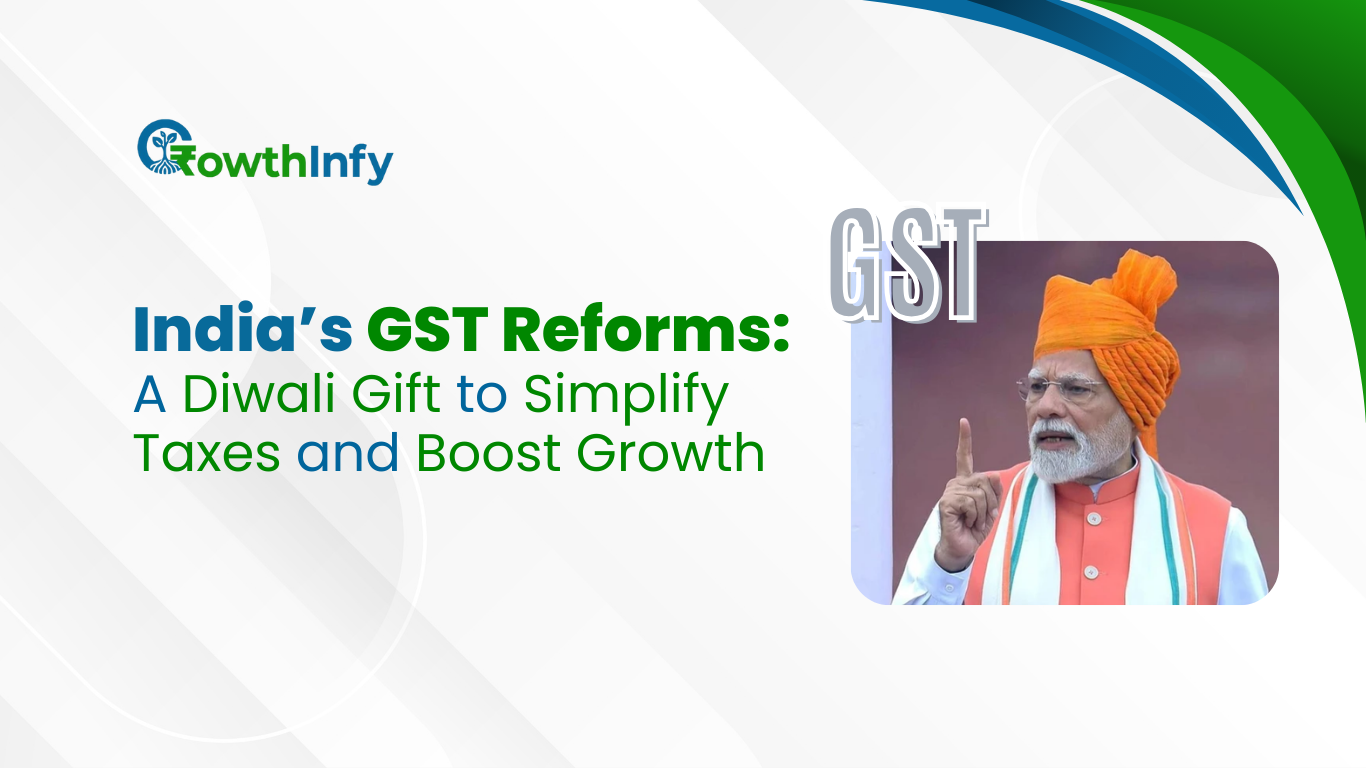GST Act 2017: Revolutionizing Indirect Taxation in India
The GST Act of 2017 introduced a behemoth change to India’s financial environment by overhaul-ing the system of indirect taxes. It has come to be referred to as the Goods and Services Tax Act. The legislation substituted a large number of center and state levies with something more transparent, less complicated to comply with, and a harmonized market. In this article, we’ll dive deep into the journey, structure, and the significant impact the Goods and Services Tax Act has had on India’s economy, particularly focusing on the goods and services tax act and its impact on GDP.
What is the GST Act 2017?
The GST Act 2017, formally known as the Goods and Services Tax Act, came into force on July 1, 2017. It unified the nation with a single, unified tax regime, replacing prominent indirect taxes such as VAT, excise duty, service tax, and others.
Tax is charged at each level of the supply chain under the GST regime, with credit of taxes paid at the preceding stage available as a set-off. This “one nation, one tax” strategy was designed to do away with the cascading effect of taxes and develop a common national market.
Key Features of GST Act 2017:
Dual structure: Central GST (CGST) and State GST (SGST) for intrastate transactions; Integrated GST (IGST) for inter-state transactions.
- Four-tier tax rate structure: 5%, 12%, 18%, and 28%.
- Uniformity in tax laws across states and union territories.
- Threshold exemptions for small businesses.
- Online tax filing and compliance system.
- Revolutionizing Indirect Taxation in India
Prior to the GST Act 2017, the taxation structure of India was dispersed, and several overlapping taxes were imposed by various authorities. Various taxes created tax complexities for businesses, which resulted in inefficiency, compliance, and hidden costs.
How GST Transformed Indirect Taxation:
- Simplification: GST substituted more than 17 taxes and 23 cesses with a simplified tax system.
- Transparency: Input tax credit mechanism made the process transparent.
- Ease of Doing Business: Companies now submit a single return rather than several tax filings.
- Reduced Tax Burden: Consumers gained from a decrease in overall tax rates on goods and services.
By promoting a transparent and efficient tax system, the Goods and Services Tax Act provided a more business-friendly environment for growth and investment.
Goods and Services Tax Act and Its Impact on GDP
One of the most discussed areas of GST has been the goods and services tax act and GDP impact. The long-term positive effects of GST are deep, although the initial few years had transitional problems.
Positive Impacts on India’s GDP:
- Trade Boost: Deletion of state borders and checkpoints lowered cost of logistics and delivery time, having a direct influence on trade efficiency.
- Increase in Revenue Collection: An expanded tax base and improved compliance resulted in increased government revenues, allowing more public expenditure.
- Formalization of Economy: GST compelled companies, particularly from the MSME sector, towards formalization, enhancing their access to credit as well as government incentives.
- Attracting Investments: A simplified tax regime made India a more desirable destination for foreign direct investments (FDI).
Empirical Evidence
Studies by bodies such as the World Bank and IMF indicate that GST would give a boost to India’s GDP by 1-2% in the medium to long term due to increased efficiency and productivity.
Challenges and the Way Forward
While the GST Act 2017 provided tremendous benefits, it had also encountered some early teething problems:
- Technical snags on the GST Network (GSTN) portal.
- Complexity of various tax rates and classification of goods/services.
- Transitional agony for small and medium-sized businesses in changing over to the new system.
Frequent changes in the act and rules leads to uncertainty and increases compliance burden for small business .Yet, through ongoing reforms like the launch of e-invoicing, harmonization of tax rates, and streamlined return filing mechanisms, GST is headed for a stronger and more business-friendly format.
Conclusion
The GST Act 2017 has truly transformed India’s system of indirect taxation, with transparency, uniformity, and efficiency. The economy adjusting and changing, the potential of the Goods and Services Tax Act in enhancing India’s GDP will be all the more real. For individuals and businesses both, it is vital to learn about the goods and services tax act and how it affects GDP to ride the new taxation system successfully.










Pingback: Understanding the GST Appellate Tribunal Procedure Rules, 2025 - Growthinfy